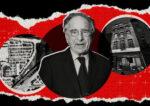Trending
Sizing up the Second Avenue subway bump: Q&A, Part I

From the January issue: Barring any unforeseen catastrophe, the Upper East Side should have a new subway line in 2017. As of late last month, the $4.4 billion project — which has been nearly a century in the making — was set to open on New Year’s Day.
“If we’re not done January 1, I will stand up and say we failed to make the deadline, and I’m disappointed,” said Gov. Andrew Cuomo, who personally visited the new stations and oversaw details. But whether construction crews actually make that deadline or not, the new transit line is already being factored into the UES market, according to experts. In November, StreetEasy released a study that showed that median rents along Second Avenue had increased 27 percent over the last five years, significantly more than rents along First and Third Avenues. That suggests more optimism than might be expected, according to Krishna Rao, StreetEasy’s economist. “The history of the Second Avenue Subway is a bit tortured, so we had a sense people wouldn’t believe it was real until it was built,” he said. “Our suspicion was perhaps the news wouldn’t see impact until opening day of the subway, because it could have been pushed back again.” Brokers are already seeing price hikes on condos, and developer Ben Shaoul, who earlier this year launched sales at 389 East 89th Street, told The Real Deal that he is shopping for more sites in the neighborhood. For our first web installment of the Q&A, we turn to Krishna Rao of StreetEasy and Frances Katzen of Douglas Elliman.

Krishna Rao
Krishna Rao
Economist, StreetEasy
Walk us through the methodology of StreetEasy’s study on the impact of the Second Avenue Subway line on rents. What was the most surprising finding?
The main part of the study was looking at Apartments Around Second Avenue, how they appreciated over the last five years, and comparing that to what we’ve seen around First and Third Avenues between 72nd and 96th. Then we looked at what sorts of appreciation rates we’re seeing. The main thing that surprised us was the pace of appreciation we’ve Seen On Second Avenue, especially compared to First or Third. In the last five years, we have seen rents increase by about 14 percent on Third, but that figure was 27 percent for Second Avenue.
Obviously once the subway line opens, that should impact prices, but construction is ongoing, and it was surprising that we are already seeing evidence that the Second Avenue area is outperforming other avenues around there based on anticipation of this subway line and how it might change the neighborhood.
Can you compare the market bump of the Second Avenue Subway market to that of other infrastructure projects in NYC?
The High Line and the impact of the High Line on the West Side is one. If you look at how it changed West Chelsea and homes and their values in that area, it’s a similarly large impact. I do tend to think there are two things in New York real estate that drive home values: convenience to commuting and also amenities like a park, such as the High Line. Supply and demand of new buildings can come up or down, but those are two of the things we tend to see.
How much of an impact will there be on the market once the subway actually opens?
Once it does open and things are final, you will see a big impact. What we saw in the study was how much exactly New Yorkers do value shorter commutes. The average New Yorker is generally willing to pay about $33 a month in extra rent to shave a minute off their commute. With the opening of these new subway stations, depending on the area, you’re looking at reducing the time it takes you to travel to 42nd Street by about 10 to 14 minutes. That adds a big convenience premium in the neighborhood when subway stations open. We expect to see convenience premiums priced into the area more and more.
It’s a little tough to look too far into the future. One of the things we’re going to look at is how the opening of the Second Avenue subway changes the character of the neighborhood. As rents increase, you start to attract a different type of renter. This often influences dining and retail options there. There’s also a lot of long-time residents of the area who established a life there and might not want to be uprooted and were planning on staying for the long haul. The pace at which something like a new subway can change a neighborhood is unknown, since it has been so long since we’ve seen the establishment of new line in the area on this scale.
How does Yorkville’s standing as one of the relative bargains in Manhattan change going forward?
Yorkville was the least expensive part of the neighborhood, but bargains depend a little on who the renters are. Certainly, [once prices go up], other areas will be attractive for some of these renters, whereas some might be a little more tied to the neighborhood. Yorkville is still the least expensive place to live out of all the Upper East Side neighborhoods.

Frances Katzen
Frances Katzen
Principal broker and founder of Katzen Team, Douglas Elliman
You’ve been working on the Upper East Side for roughly a decade. What are you seeing in the UES market now that the highly anticipated subway is set to open?
The Upper East Side east of Third Avenue was typically considered the “nosebleed section.” People didn’t want to live over there; it was too far over. But people really believe the subway is happening now, and there is an affluent group of people who want chic, well-made apartments. And what we’re finding now is that people do have an interest in seeing what’s coming to life on places like East End Avenue and York Avenue. Restaurants are shifting up there, and retail too.
What types of residents are you seeing moving into the neighborhood, and what types of investors are interested?
A broad range: young, hip professionals; Europeans who want to be near the best schools, people who want the loft lifestyle like Downtown but don’t want 8-foot ceilings or co-op boards. They want the Downtown feel and have Uptown needs and sensibilities. I do see foreign investors who show an interest especially next to schools. Foreigners are looking for condos they can rent out, a pied-a-terre. They are specifically looking for ease and a clean acquisition that doesn’t have any hair on it. It’s a slam dunk on the Upper East Side, and the pricing has different entry points. The market now in Downtown is very expensive and the Upper East Side is more opportunistic, with a bigger width and deviation on either side of Lexington. There are a lot more opportunities to enter, and the investor likes it because the numbers make more sense for buyers.
Where are the relative bargains in the neighborhood going to be?
Yorkville will not remain the relative bargain. Right now, people find it noisy, inconvenient, and people want silence when they move in. But the ones looking now may be missing that market by virtue of the fact that it’s going to get very pricey very quickly when there’s no more risk, noise, dirt and fuss. If you’re an entry buyer or investor with a limited budget, ultrasmart people looking for value are looking at First Avenue: it’s not such a dumb idea. I’m seeing a shift and going to bet that 10 years down the line those people will not regret putting their liquid assets into an apartment, because this thing will perform. We feel that is the natural progression. This island ain’t getting any bigger and the population is growing, and the only way to go is up. So on the Upper East Side, there’s a new buyer in town who doesn’t need to have a prewar on Park. They want good product and value.




